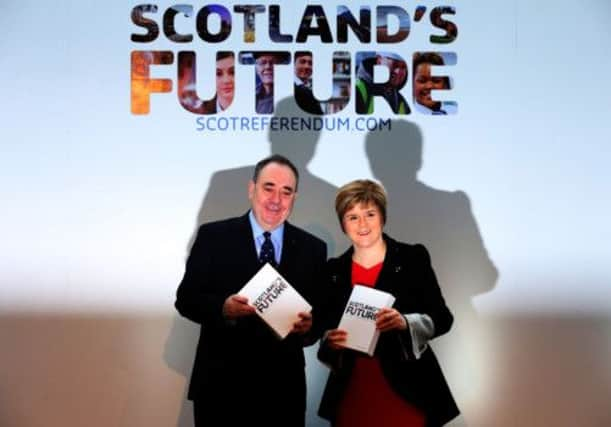Scottish independence white paper: key facts


• Scotland will keep the pound after independence, with no proposals for a much anticipated Plan B on the currency set out. Alex Salmond insists a currency union with the UK will be agreed because it’s in the interests of both countries. “The pound is Scotland’s currency just as much as it is the rest of the UK’s” the document states.
• The paper sets out plans for a revolution in childcare with the aim of getting a generation of women back innto the workplace. By 2024, all children from the age one will be entitled to full-time state-funded childcare of 1,140 hours, the equivalent of the hours spent in primary school
Advertisement
Hide AdAdvertisement
Hide Ad• Scotland will remain part of the EU. Negotiations will start immediately after independence about ensuring a smooth transition, on the basis of EU “continuity of effect” provisions meaning Scotland’s current treaty obligations and opt-outs as part of the EU will remain.
• The UK’s current Trident nuclear weapons system based on the Clyde will be removed by 2020, the end of the first term of an independent Scottish Parliament, despite warnings from military experts that it could take until 2020.
• Income tax will not go up after independence, the document states, because Scotland’s finances will be healthier than those of the UK as a whole.
• Border checks with England will not be put in place after independence, as the document sets out plans to remain part of the Common Travel Area (CTA) with the rest of the UK, Ireland and the Channel Islands.
• A points-based immigration system will be introduced in order to increase the number of migrants coming to Scotland, while immigration is being restricted in the UK. This could provide incentives for migrants to work in more remote areas where they are most needed.
• The first government of an independent Scotland will be formed in May 2016 after the Holyrood elections that year. MSPs will be elected in the same way as previous elections and there is no current plans to increase the 129 MSPs
• Scottish passports will be issued to all people who secure Scottish citizenship. British citizens “habitually resident” in Scotland will be considered Scottish citizens - as well as Scottish born British citizens living outside Scotland. It will also be open to those who have Scottish parents or grandparents, people who have lived here for 10 years, while migrants can apply for “naturalisation.”
• Oil and gas from the North Sea is largely based Scotland’s share of the Uk continental shelf and the document indicates that this includes more than 90% of oil and gas revenues. The sector itself was worth about £22 billion to Scottish GDP last year.
SEE ALSO:
Advertisement
Hide AdAdvertisement
Hide Ad